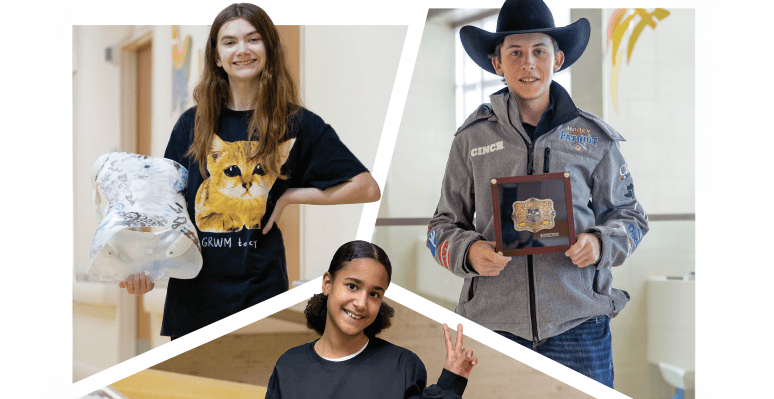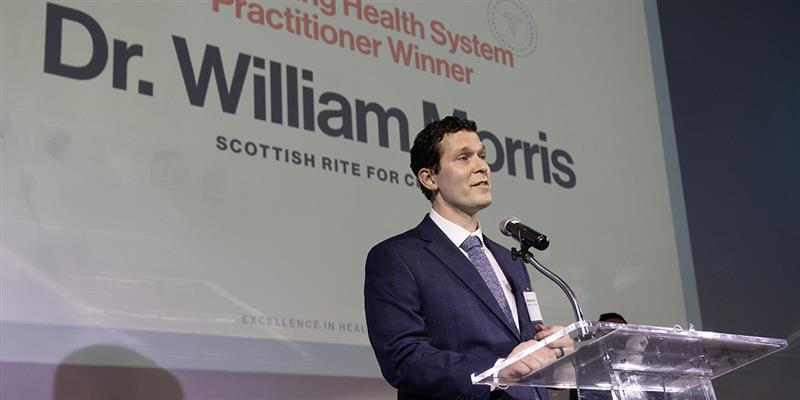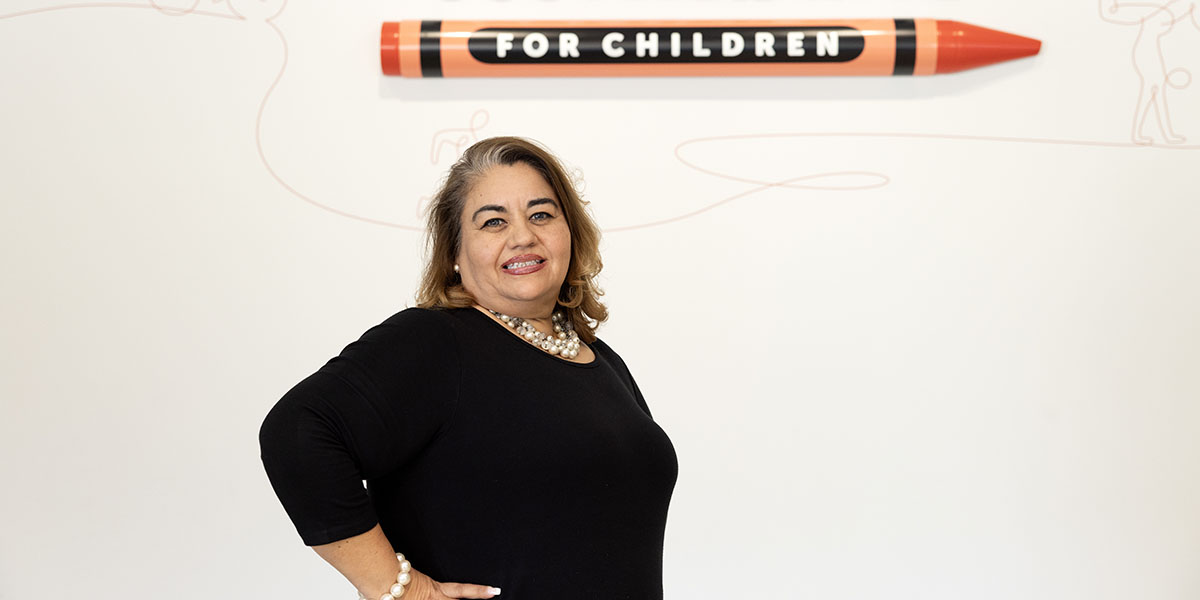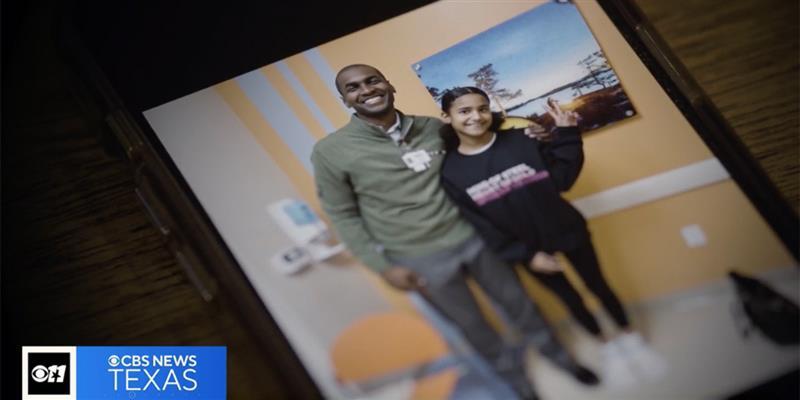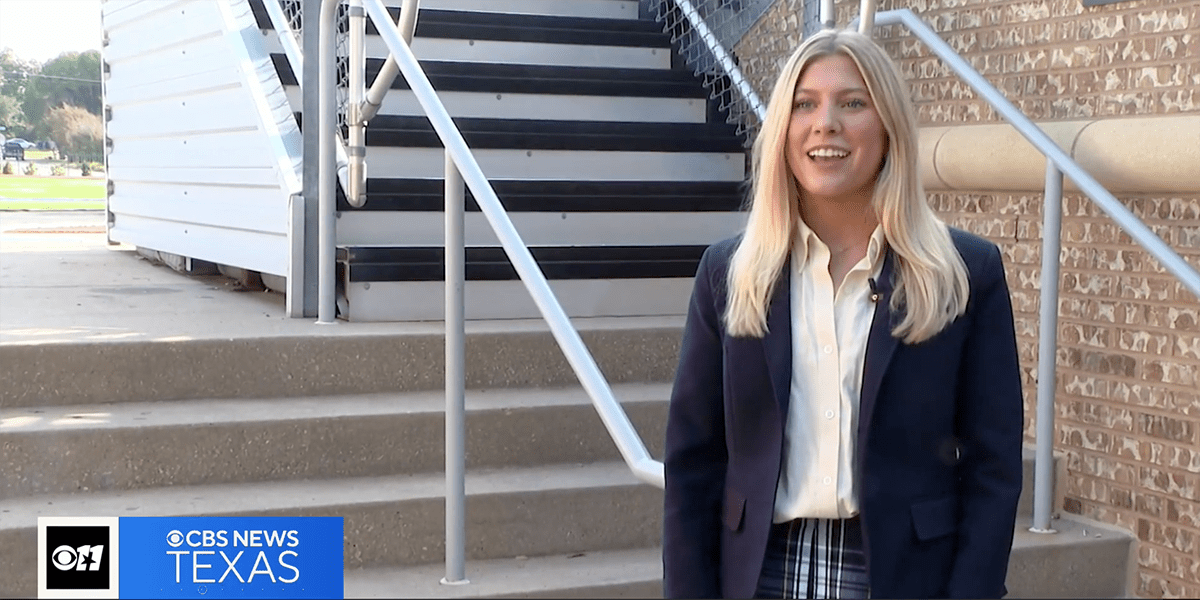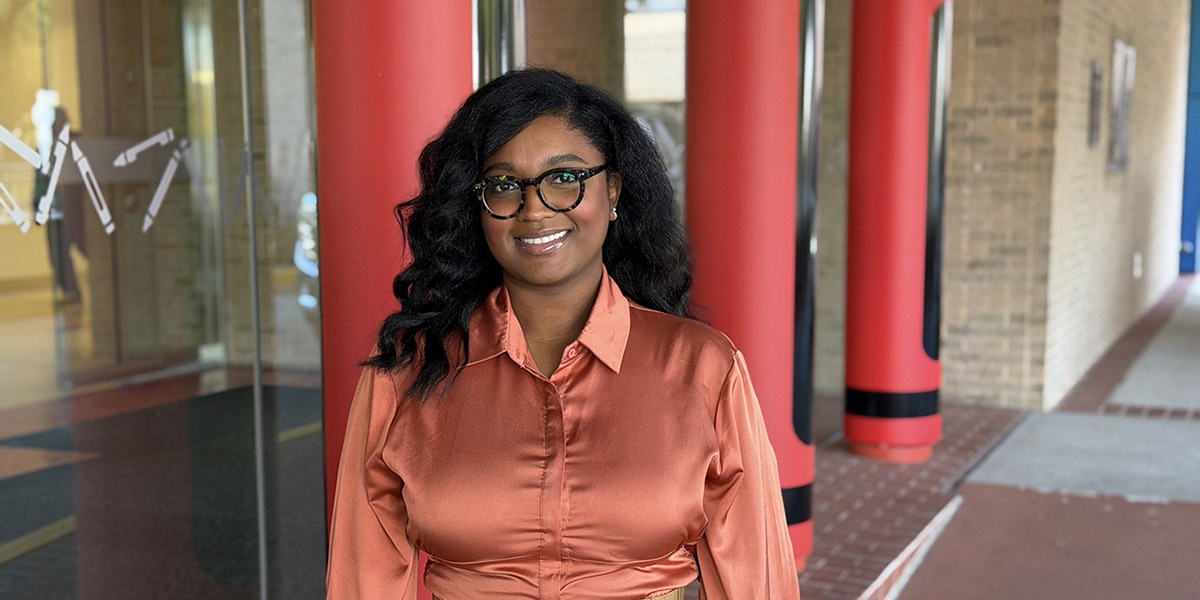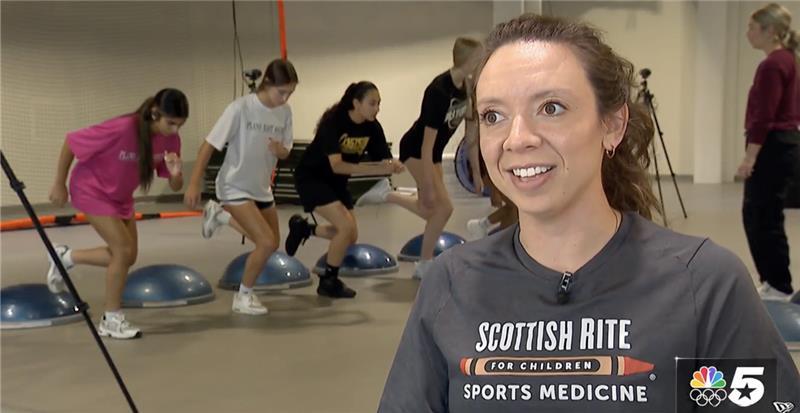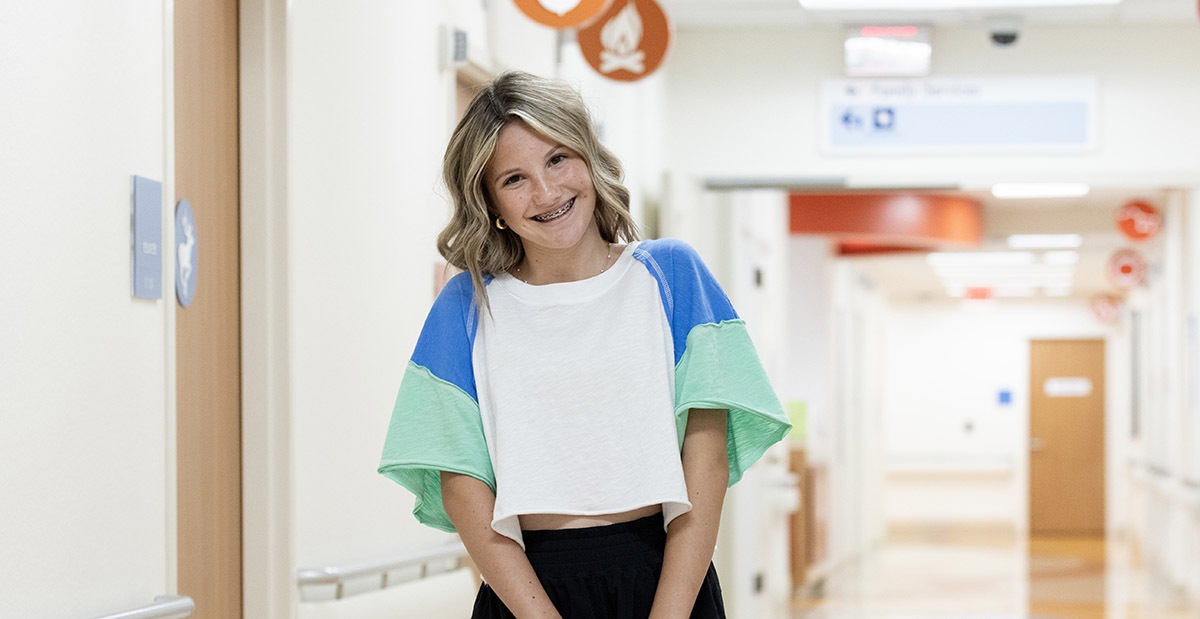Previously published in Rite Up, 2025 – Issue 2.
By Kristi Shewmaker
Meet Hanna, a 12-year-old of Flower Mound, Texas, who loves listening to music while drawing; Bella, a 13-year-old all-around athlete of Lewisville, Texas, who enjoys soccer; and Coleman, a 17-year-old of Navasota, Texas, who is a three-time junior world champion rodeo calf roper.
These amazing kids do not know each other, but they share something in common. They all have scoliosis — adolescent idiopathic scoliosis (AIS) to be exact. However, each of them has received different treatments tailored to their specific, individual needs. What is more interesting than their condition is the way they are handling it — with resilience! With no known cause, AIS is the most common type of scoliosis in children and teens. It develops between the ages of 10 and 18, is found in as many as 4 in 100 adolescents and is more prevalent in girls. It is a progressive condition affecting the spine in which the scoliosis curve typically worsens during a child’s rapid growth period. The diagnosis can surprise parents as their child may have passed one or more scoliosis screenings.
Scoliosis is defined as a curve that measures more than 10 degrees on an X-ray. A straight spine is zero degrees. Children with curves less than 20 degrees are monitored. For curves between 20 and 45 degrees, bracing is recommended. For those above 45 to 50 degrees, surgery is recommended, which may include various types, such as a spinal fusion or vertebral body tethering (VBT). Spinal fusion is a procedure in which the vertebrae in the spine are fused together, creating a single, solid bone that is immediately straightened. Metal rods attached by screws are used to hold the spine in place until the bone heals. In a VBT procedure, a surgeon attaches a flexible cord to the spine, which slows the growth on one side of the curve while allowing growth on the other side, to straighten the spine over time. Hanna’s curve measures 23 degrees. She wears a brace 20 hours a day with the goal of halting the progression so that when she stops growing, she will not need surgery. Bella has two curves. Her thoracic curve, or upper spine curve, measured 61 degrees, and her lumbar curve, or lower spine curve, measured 52 degrees. Working with a pediatric orthopedic surgeon, she opted for a hybrid surgery that included a spinal implantation and fusion at the top and VBT at the bottom.
Coleman underwent a spinal fusion for two thoracic curves, with the largest measuring 83 degrees going into surgery. “An important message for patient families to know is that their children are going to live long, healthy, happy lives with this condition,” says pediatric orthopedic surgeon and Assistant Chief of Staff Brandon A. Ramo, M.D. “Whether they need a brace or surgery, that shouldn’t stop them from achieving their goals.”
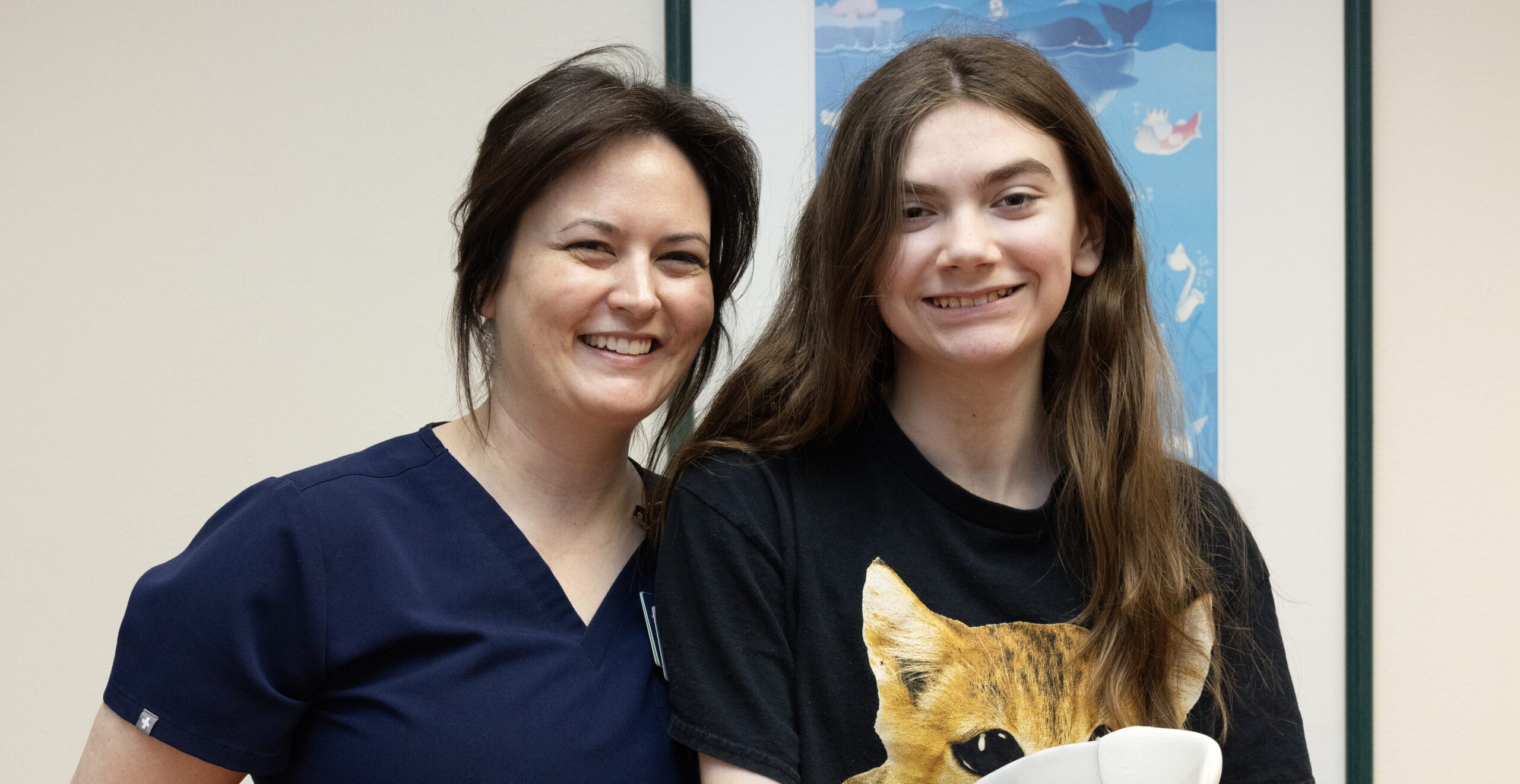
Hanna
In sixth grade, Hanna was referred to Scottish Rite for Children by her family chiropractor who noticed the curve in her back. This news came after she passed her first scoliosis screening at school in fifth grade. At Scottish Rite, she was diagnosed with AIS.
“I was devastated,” says Taylor, Hanna’s father, “not only for Hanna having to go through this, but I also felt colossal amounts of guilt for not catching it.” Kelly, Hanna’s mother, explains that she was thankful they caught it when they did and not a year later when children get tested at school again in seventh grade. “We would’ve lost a year, and who knows how bad her curve would’ve been by then,” Kelly says. “We might’ve been having a very different conversation — one about surgery instead of a brace.”
Hanna chose a brace with a tattoo design that was custom made in-house by orthotist Christina Gambrell. “If I’m going to wear something for this long, then I’m going to make sure it looks cool,” Hanna says. She wears the brace night and day, taking only a four-hour break before bedtime. Because Scottish Rite’s Orthotics and Prosthetics team is onsite, they can measure, cast, mold, fit, align and fabricate braces without having to place an order with an outside company. At her appointments, Hanna receives adjustments to her brace as she grows to ensure that she is comfortable.
“Bracing is the one treatment we have that is proven with multiple studies to prevent surgery,” says Amy L. McIntosh, M.D., pediatric orthopedic surgeon. “Hanna is the perfect candidate for a brace. She’s going through peak height velocity, so it’s a great time to wear a brace to prevent progression of her curve.”
Based on her growth projection, Hanna has about a year to a year-and-a-half left of wearing her brace. In the meantime, Hanna is handling her treatment with grace. For kids with scoliosis who must wear a brace, she gives this advice: “Don’t make yourself think that you are weird for wearing it. It just proves that you have the strength to overcome it.”
Regarding the care that Hanna has received at Scottish Rite, Taylor says, “There’s not enough praise or kind words that we could dream up to describe it. On a scale of 1 to 10, it’s a 200! In terms of children’s health care, I couldn’t imagine anything better.”
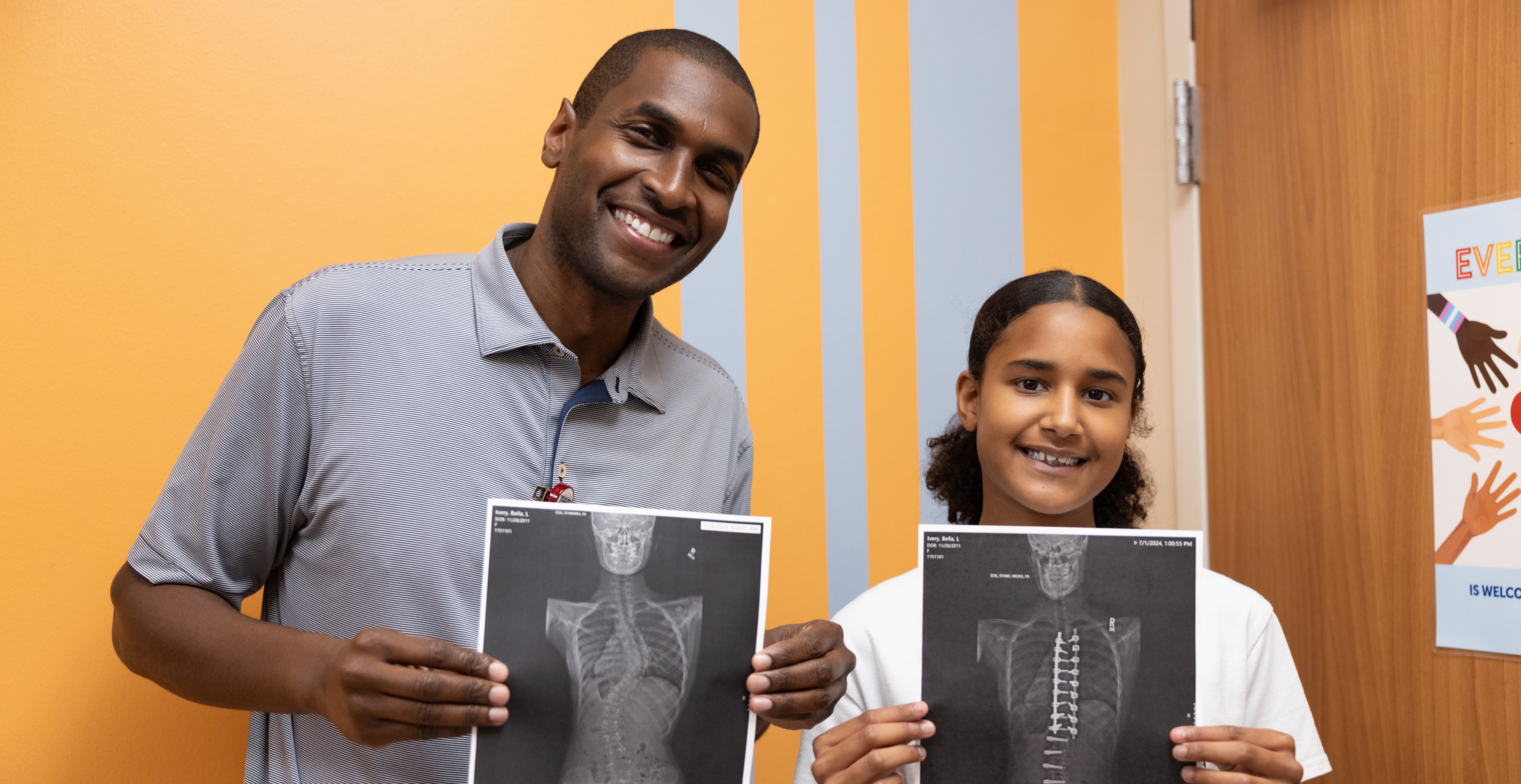
Bella
Bella plays sports year-round, but soccer is her favorite. “It’s really fun, it relieves all my anxiety, and it makes me feel happy,” she says.
The first indication that Bella had scoliosis came in the form of a letter from her fifth grade school nurse. Then, her family noticed the difference in her shoulders — one was sticking out and the other seemed to be inverted. Brittanie, Bella’s mother, took her to their pediatrician who referred them to Scottish Rite.
Initially, Bella saw Dr. Ramo, who diagnosed her with AIS. “He showed us the degrees of her curves, and we were in total shock,” Brittanie says. Bella was scared. “I didn’t know if I could play soccer again,” she says. With a 61-degree thoracic curve and a 52-degree lumbar curve, Bella would need surgery. Dr. Ramo explained that she had options, including spinal fusion, VBT or a hybrid procedure that uses both. He suggested that she see pediatric orthopedic surgeon Jaysson T. Brooks, M.D., who performs the VBT procedure to discuss the possibilities.
Scottish Rite for Children has six pediatric spine surgeons who are leaders in their specialties and are laser-focused on providing the best evidence- based care. From the straightforward to the most complex spinal deformities, Scottish Rite surgeons practice team medicine, in which every child’s surgical plan is reviewed by not only their doctor but all six spine surgeons.
Dr. Brooks presented the options, and after having a long discussion with the family, they decided to proceed with the hybrid surgery that would fuse Bella’s upper spine and tether her lower spine. “Because most of your flexibility comes from your lower back, we try to avoid that area when it comes to fusing,” Dr. Brooks says. “If the lumbar curve is small enough, we leave it alone, but with Bella, the numbers weren’t adding up, so tethering was the best option for her to maintain her flexibility.” He emphasizes that every spine surgery is a shared decision- making process that depends on the patient’s individual needs and the family’s personal values.
After surgery, Bella stayed home from school for a month to heal. After three months, she began easing back into sports, and after six months, she was fully back. Reviewing her X-ray from her one-year follow-up, Dr. Brooks says, “Bella is rock-solid straight. She’s had about as great of an outcome as you can ask for.”
Brittanie describes Bella’s care as outstanding. “The whole team is so confident in what they do that it takes away your fear as a parent,” she says. For kids facing surgery for scoliosis, Bella’s advice is to trust in the process.
“There is no technique related to scoliosis that we can’t offer at Scottish Rite,” Dr. Brooks says. “Our nurses and surgical staff — all they do is pediatric orthopedics. With a highly specialized team that focuses on one thing, you’re bound to get better outcomes.”

Coleman
Coleman roped his first calf off a horse when he was 4 years old. For years, he has competed in the rodeo tie-down event. “You nod your head, they release the calf, you swing your rope, rope ‘em, jump off the horse, run down there, flank ‘em, and then you tie three out of the four legs,” he says.
With four or five horses saddled in an arena at his house, Coleman practices three to four hours a day. He earned junior world champion titles in 2017, 2018 and 2023. Just before his 2023 win, he was referred to Scottish Rite by an orthopedic surgeon who treats rodeo athletes. Coleman’s scoliosis was already past the surgical threshold when Dr. Ramo diagnosed him with AIS. “His curves were pretty big,” Dr. Ramo says. “He had a double thoracic curve pattern, which is uniquely difficult and one of the stiffest curve patterns that we treat.”
In order to flank and tie a calf, it is imperative to be agile and flexible enough to bend over easily. “I was afraid I wouldn’t be able to rope again,” Coleman says.
Dr. Ramo stresses the importance of individualized care for each patient. “We plan a treatment strategy that matches their needs — not just the needs for their back but also the needs for what they’re doing in their lives,” he says. Coleman wanted to finish the rodeo season before having surgery. “We planned his spinal fusion to fit his timeline and ensured that we maintained every bit of motion we could offer him with his active lifestyle and competitive spirit,” Dr. Ramo says.
At age 16, Coleman scored his best time at 7.4 seconds, a remarkable feat. But, the time to beat is 6.3 — the world record set by none other than his father, Ricky, who is in the Texas Rodeo Cowboy Hall of Fame and a 15-time National Finals Rodeo qualifier. Despite having major spinal surgery on a double thoracic curve, Coleman is on his way. He recently received a full scholarship to Southwest Texas College in Uvalde where he will compete on their rodeo team. Ultimately, he hopes to compete professionally in about 100 rodeos a year with the goal of making the National Finals Rodeo, often called “the Super Bowl of rodeo,” which features the top 15 in the world.
“There are misperceptions about people with scoliosis, that they can’t do sports or participate in certain activities,” Dr. Ramo says. “Coleman is a prime example of how that is absolutely not true — that you can live a very healthy, active life with this condition and be a world champion at what you do.”


